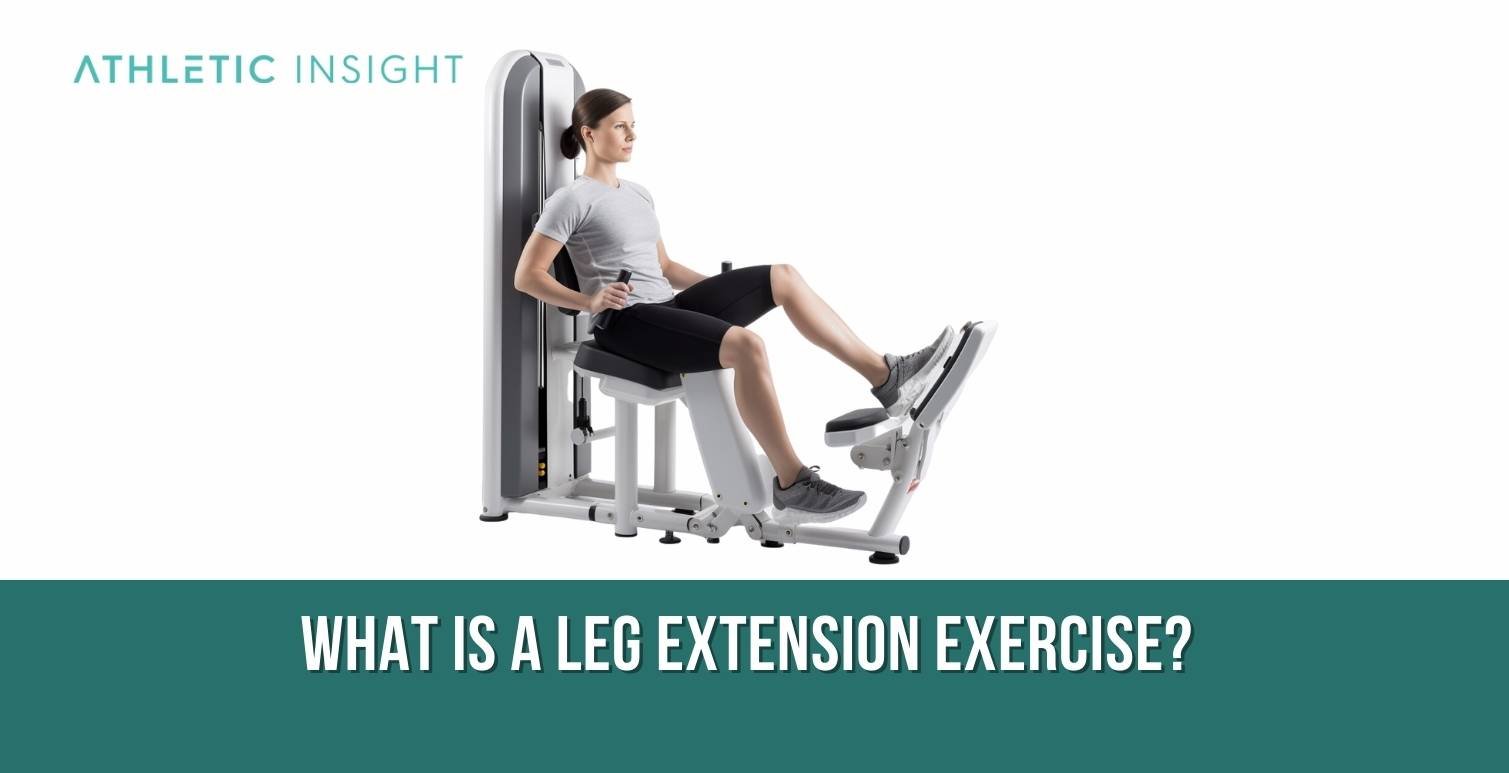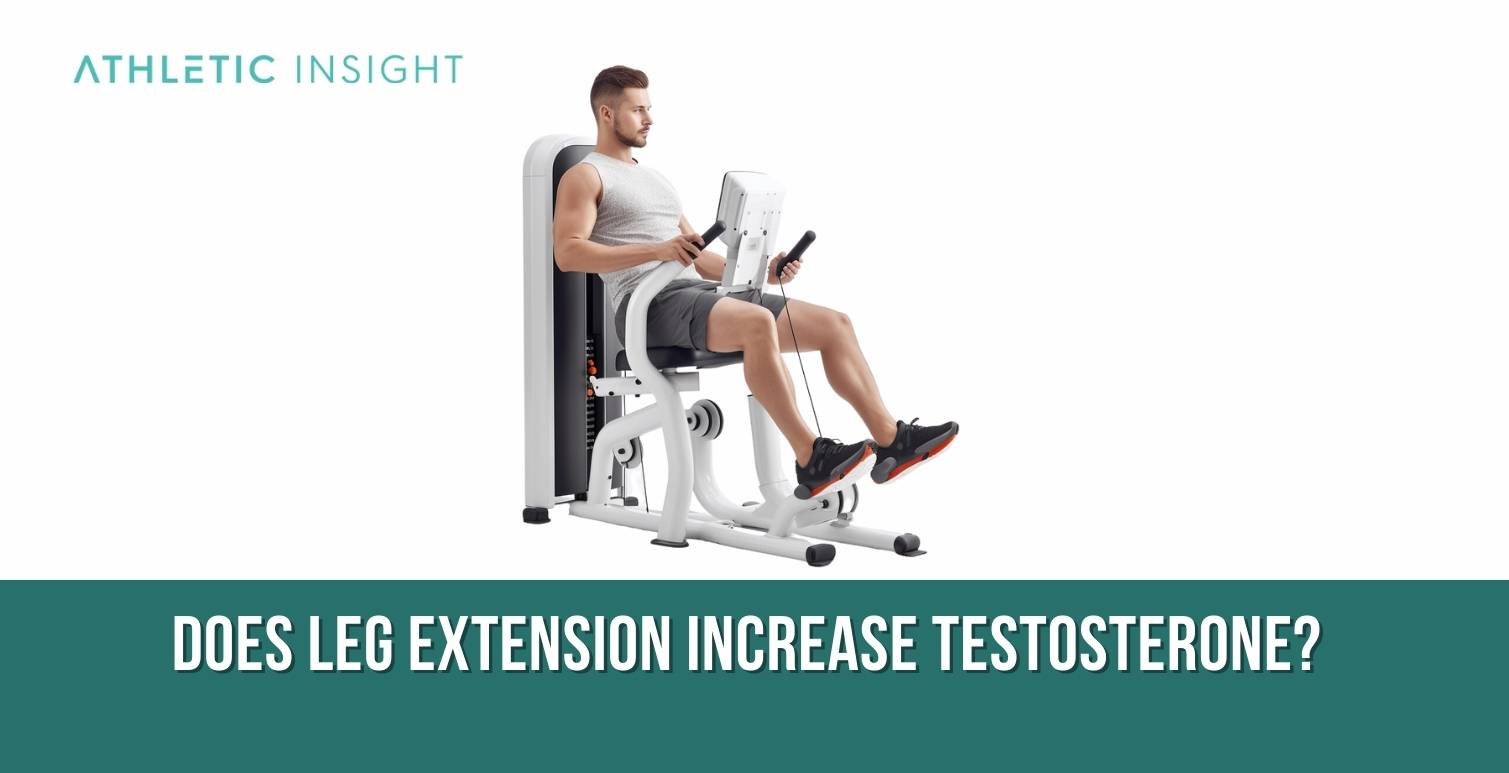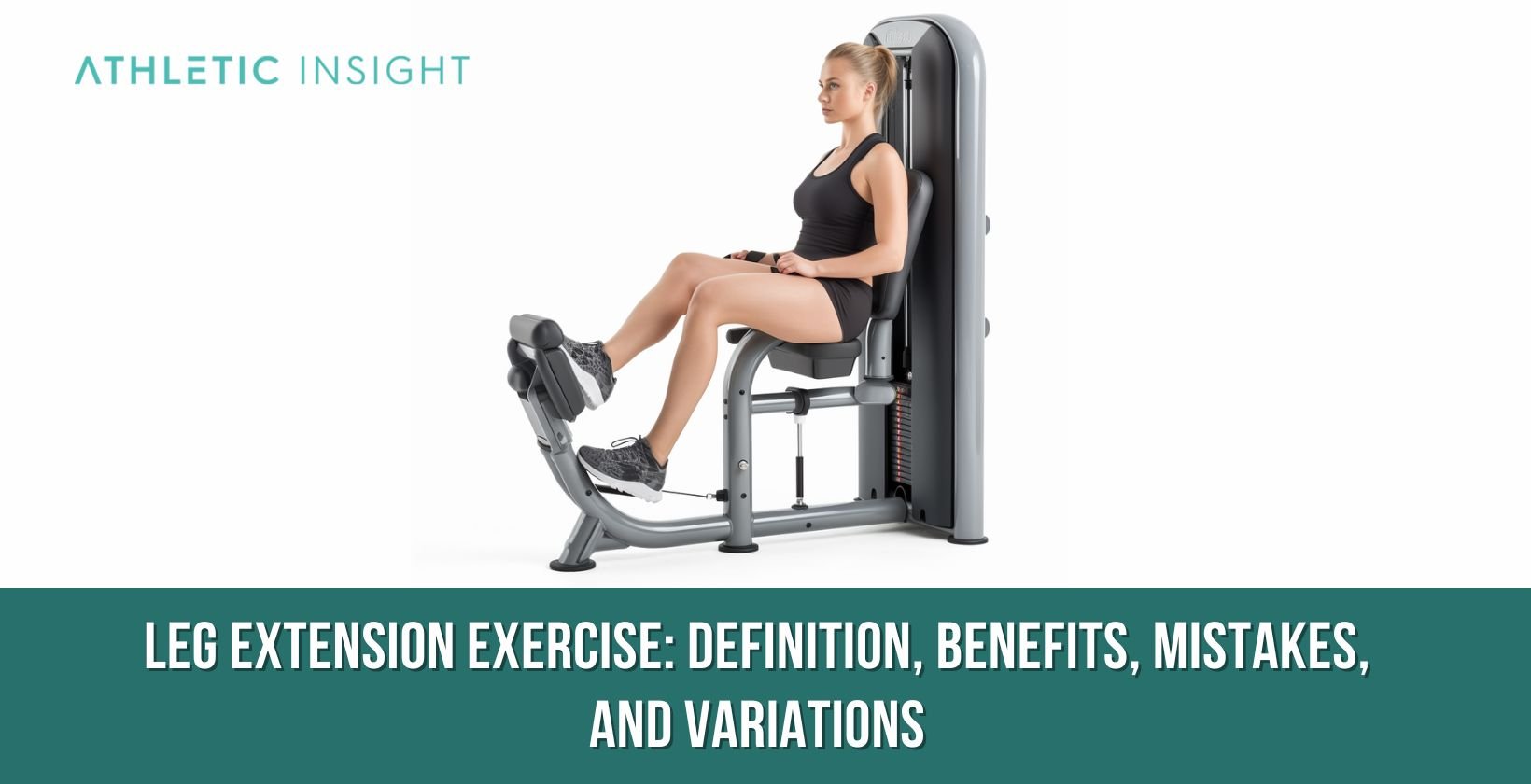The leg extension exercise, a popular isolation movement, targets the quadriceps muscles for greater definition and strength. This article covers the proper execution of leg extensions, the benefits of incorporating them into a workout routine, common mistakes to avoid, and variations to maintain engagement and challenge.
How to Perform a Leg Extension
To perform a proper leg extension, it is important to follow proper technique to avoid injury. To perform perfect form, you must first position your hands on the hand bars. Then, exhale as you lift the weight, keeping your back straight and your legs from being fully extended. Lastly, lower the weight back to the starting position while exhaling. Perform three sets of eight to twelve repetitions
- Position your hands on the hand bars
- Exhale as you lift the weight, keeping your back straight and your legs from being fully extended.
- Lower the weight back to the starting position while exhaling.
- Perform three sets of eight to twelve repetitions
1. Position your hands on the hand bars
Begin by sitting on the leg extension machine, aligning the backrest to support a straight posture. Grip the hand bars on either side of the seat to provide stability and control during the exercise. The hand bars facilitate proper form and can assist in maintaining balance throughout the movement.
2. Exhale as you lift the weight, keeping your back straight and your legs from being fully extended.
With feet positioned under the roller pads and shins pressed firmly against them, exhale as you extend your legs, lifting the weight. Ensure that the back remains straight and firmly against the backrest. Avoid completely locking the knees to prevent strain or injury, and maintain a slight bend in the joint.
3. Lower the weight back to the starting position while exhaling.
As you return to the initial position, inhale and slowly lower the weight by bending your knees, engaging the quadriceps throughout the movement. Controlled eccentric movement helps to stimulate muscle growth and mitigate the risk of injury.
4. Perform three sets of eight to twelve repetitions
For optimal results, execute three sets of eight to twelve repetitions. This rep range encourages hypertrophy and strength gains. Adjust the weight accordingly to maintain proper form and ensure that the final repetitions in each set are challenging but achievable.
What is a Leg Extension Exercise?
The leg extension exercise is an isolation movement that primarily targets the quadriceps, the large muscles at the front of the thigh. Performed on a specialized leg extension machine, the exercise involves extending the lower legs against resistance, engaging the quadriceps to lift and lower the weight.

What muscles does the leg extension exercise primarily work?
The leg extension exercise primarily works the quadriceps, a group of four muscles (rectus femoris, vastus lateralis, vastus medialis, and vastus intermedius) responsible for knee extension and hip flexion.
What machine is used for Leg Extension Exercise?
The leg extension exercise is performed on a dedicated leg extension machine, which typically features an adjustable seat, backrest, hand bars, roller pads, and a weight stack or plate-loaded resistance system.
Do Leg Extensions help build bigger Legs?
Yes, leg extensions can contribute to building bigger legs by isolating and effectively targeting the quadriceps muscles. When combined with compound exercises and a well-rounded leg workout, leg extensions promote muscle growth and development.
Does Leg Extension Increase Testosterone?
No, leg extensions are not known to significantly increase testosterone levels. Testosterone, a hormone responsible for muscle growth and strength, typically increases in response to large, compound movements, such as squats or deadlifts, which involve multiple muscle groups and place greater stress on the body.

What are the Benefits of Leg Extension Exercise?
There are many benefits of the leg extension exercise including isolation of the quadriceps muscles, improved muscle definition and tone, strengthened knee joints and supporting structures, enhanced athletic performance, increased range of motion and flexibility, greater muscle endurance, targeted rehabilitation and injury prevention, and easily modifiable resistance for progression or regression.
- Isolation of the quadriceps muscles
- Improved muscle definition and tone
- Strengthened knee joints and supporting structures
- Enhanced athletic performance
- Increased range of motion and flexibility
- Greater muscle endurance
- Targeted rehabilitation and injury prevention
- Easily modifiable resistance for progression or regression
What are some common mistakes to avoid when performing Leg Extension Exercise?
There are six common mistakes to avoid while performing leg extension exercise, these include hyperextending the knees or locking them out, utilizing momentum instead of controlled movements, poor posture or slouching in the seat, overloading the weight stack, compromising form, neglecting proper breathing technique, and improper positioning of the roller pads
- Hyperextending the knees or locking them out
- Utilizing momentum instead of controlled movements
- Poor posture or slouching in the seat
- Overloading the weight stack, compromising form
- Neglecting proper breathing technique
- Improper positioning of the roller pads
What are the Variations of Leg Extension Exercise?
There are many variations of leg extension exercise. Some examples include single-leg extensions, seated leg extensions with an ankle weight, leg extensions using resistance bands, tempo or paused leg extensions, and leg extensions with varying foot positions.
- Single-leg extensions
- Seated leg extensions with an ankle weight
- Leg extensions using resistance bands
- Tempo or paused leg extensions
- Leg extensions with varying foot positions
Can you do Leg Extension Exercise with a Leg Press?
No, leg extension exercises and leg presses target different muscle groups and require distinct equipment. Leg presses are compound exercises that engage multiple muscle groups, including the quadriceps, hamstrings, and glutes. While leg presses can complement leg extensions in a workout, they cannot replace them for quadriceps isolation.
Are Leg Extensions Exercise good for bad knees?
Leg extensions can be both beneficial and detrimental for individuals with knee issues, depending on the individual’s specific condition and exercise execution. For some, leg extensions may strengthen the muscles surrounding the knee joint and improve stability. However, others may find that the exercise exacerbates knee pain or discomfort.
Are there any Alternatives for Leg Extensions Exercise that target quadriceps?
Yes, there are alternatives to leg extensions that effectively target the quadriceps, these include squats, lunges, step-ups, Bulgarian split squats, and hack squats.
- Squats
- Lunges
- Step-ups
- Bulgarian split squats
- Hack squats
These exercises engage the quadriceps while also working other lower body muscles, offering a more comprehensive workout option.



